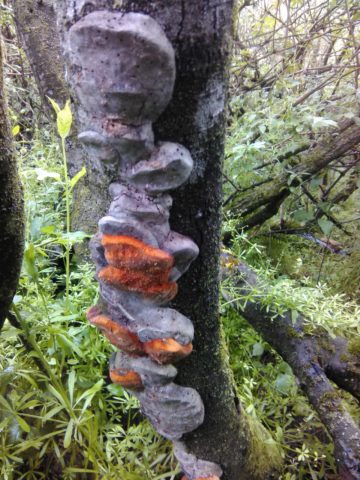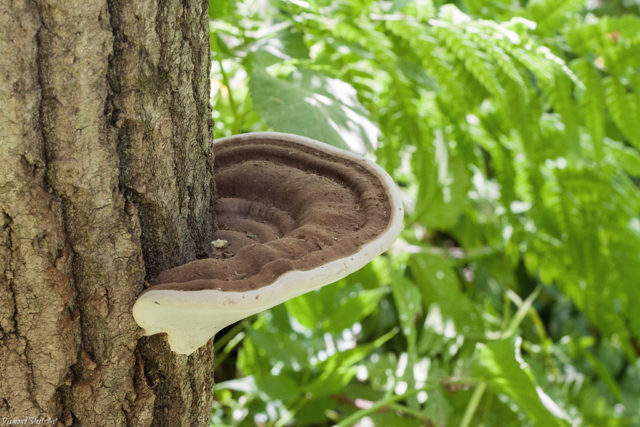Content
Fellinus tuberous or tuberculous (Plum false tinder fungus) is a perennial tree fungus of the genus Fellinus, of the Gimenochaetaceae family. The Latin name is Phellinus igniarius. It grows mainly on trees of the Rosaceae family, most often on plums, cherry plums, cherries, and apricots.
What does phellinus tuberous look like?
The fruiting body of Fellinus tuberous is hard, woody, brown, finely porous, small in size (about 3-7 cm in diameter). It grows in height up to 10-12 cm. The shape of the fruiting body is cushion-shaped, prostrate or prostrate-bent, with blunt edges. In cross section, triangular or hoof-shaped.
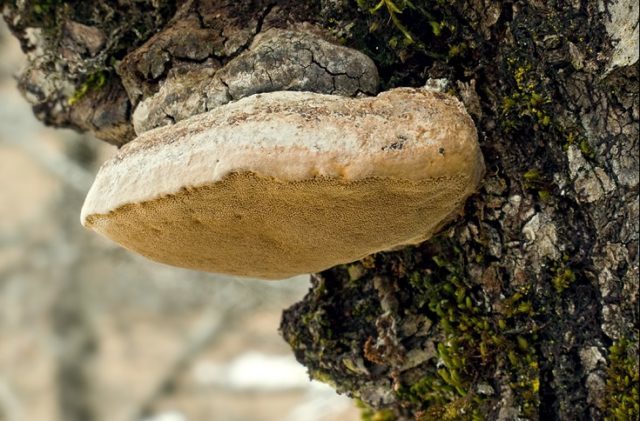
Young fellinus tuberous
At an early age, the surface of the cap of the plum tinder fungus is delicate, velvety. When mature, it becomes covered with a hard black crust and cracks. On very old specimens, a green bloom of algae sometimes appears.
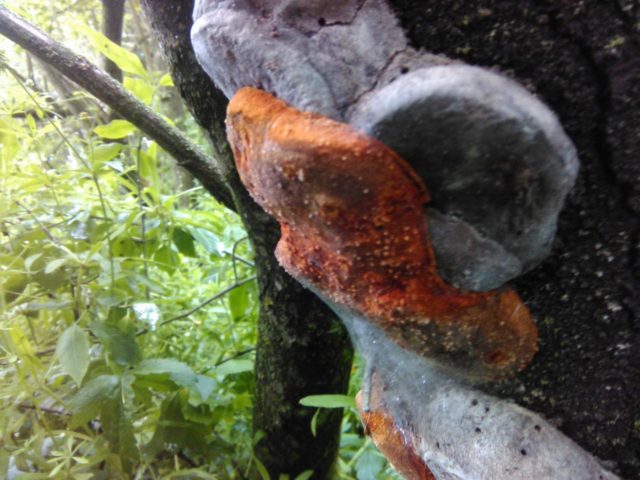
The shape of the fruiting body is hoof-like
The pulp of Fellinus lumpy comes in a variety of colors:
- light brown;
- brown;
- redhead;
- gray;
- black.
On the underside, on the surface of the mushroom, there are cracks and protrusions. Gimenfor in the false plum tinder fungus is tubular, layered. The same color as the mushroom tissue. The tubules grow annually. On average, the thickness of one layer is 50-60 mm. The color of the tubules ranges from reddish brown to chestnut. The pores of Fellinus tuberous are small, rounded. Spores are smooth, spherical, colorless or light yellow. The spore powder is white or yellowish.
Where and how it grows
False plum tinder fungus is a perennial mushroom. Grows on living and dead trees, as well as stumps. Most often found in mixed plantings. The area of attachment of the fungus is wide. Fellinus tuberous grows singly or in large colonies, covering large areas of tree trunks. Found in the northern regions of Russia, with a temperate climate.
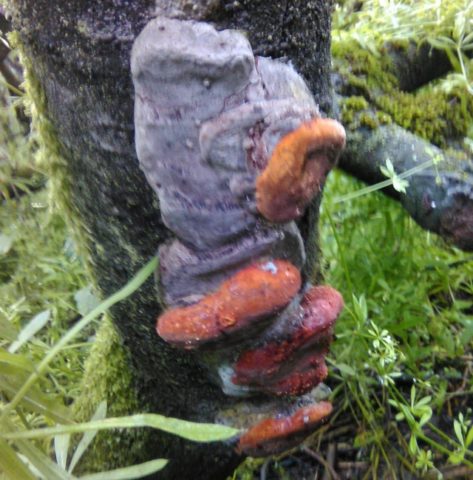
The species grows on dying trees
Is the mushroom edible or not
Fellinus tuberous belongs to the category of inedible mushrooms. The structure of the pulp and its taste do not allow it to be eaten.
Doubles and their differences
Many tinder fungi are similar to each other. Sometimes they differ only in shape and place of growth, choosing a certain type of tree.
Doubles of Pellinus tuberous:
- Flat polypore (Ganoderma applanatum) - the surface of the crust is dull chocolate or dark brown. Disputes darken when pressed. Inedible. Used in Traditional Chinese Medicine.
- Bordered polypore (Fomitopsis pinicola) - there are red-yellow stripes along the edge of the fruiting body. Inedible.Used to make homeopathic remedies and mushroom flavoring.
Conclusion
Pellinus tuberous often provokes the occurrence of dangerous woody diseases, in particular, such as white and yellow rot. As a result of their settling on living trees, about 80-100% of the massifs die, which causes significant damage to forestry, gardening and packing facilities.
